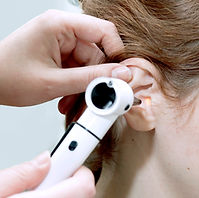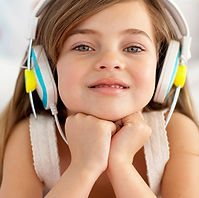
Sense of Taste: We Taste With Our Tongue

This lesson contains affiliate links to products I have used and personally recommend. At no cost to you, I make a commission for purchases made through the links or advertisements. These commissions help to pay for the costs of the site and enable it to remain free for anyone who wants to use it.
Objective:
Students will demonstrate that the tongue is responsible for determining how something tastes.
Question that encompasses the objective:
Would you be able to say for sure that you liked or disliked a food item based on how it looks, why or why not?
Prepare the Learner: Activating Prior Knowledge.
How will students prior knowledge be activated?
Ask students to share some of their favorite foods and describe how they taste. This can be done as a whole group or in partner sharing.
Materials and Free Resources to Download for this Lesson:
-
Prezi presentation, "Who is tasting?" by Jacquelyn Lawrence
-
YouTube Video, "Our Sense of Taste and Smell", by Eleftherios Katsaros
-
One piece of paper per student or Science notebook/ scribbler (to record answers throughout the lesson)
-
Jelly Beans (6 different flavors in total- 12 jelly beans per student pair- 2 jelly beans of each flavor, see Activity 2 Pre Activity Prep)
-
One small cup per student (for jelly beans)
-
One wipe per student or hand sanitizer (to clean hands before touching tongue)
Input:
What is the most important content in this lesson?
To reach this lesson’s objective, students need to understand:
1. Taste is the primary sense involved in receiving and processing flavors from our environment.
2. The tongue is responsible for the intake of flavors.
3. Taste serves many purposes in the real world, including keeping us healthy and protecting us.
How will the learning of this content be facilitated?
-
In this lesson, students will be initially engaged by viewing a slide show of children who are tasting, and children who are not tasting. Students will need to determine who is tasting and at the end must surmise that those who are tasting in the pictures are all using their tongues.
-
In the next part of the activity, students will work to confirm their findings from the previous activity. Students will watch a video that discusses our sense of taste and our tongues role in sense of taste. Students will learn that the tongue is needed to taste because our taste buds are located on top of the tongue. Students will examine their tongues to describe their taste buds.
-
Next, students will work in pairs, using their tongues to determine the flavor of different jellybeans. Students’ sense of sight will be impaired by a blindfold, thereby requiring that they use only their tongues. Students will describe in writing how they used their tongues to taste in this experiment.
-
Finally, the students will answer a written independent assessment question that requires students to apply their understanding of the objective to the real world. Would you be able to say for sure that you liked or disliked a food item based on how it looks, why or why not?
Time/Application
3-5 minutes
Guided Introduction
-
Guided Mini-Lesson: Prezi Presentation, Who is tasting? (10 minutes)
-
Activity Part 1: YouTube Video, Our Sense of Taste (and Smell) (10 minutes)
-
Activity Part 2: Tongue Detectives (20 minutes)
-
Independent Assessment (10 minutes)
10 minutes
Guided Mini-Lesson: Prezi Presentation, "Who is Tasting?"
-
Set up to play the Prezi Presentation, "Who is Tasting?"
-
Explain to students they will watch a slideshow with pictures. In some of the pictures the children are tasting something and in some of them they are not. Students will need to decide who is tasting something based on evidence in the pictures.
-
Instruct students that they will write down the names of the children who are doing the tasting as the slideshow plays. Students are to keep their answers private until the end of the activity.
-
Inform students there is also a multiple-choice question at the end of the presentation that they will answer on their paper.
-
Play the presentation, allowing time for students to record their answers.
-
After the presentation discuss students’ answers as a class. Ask students to share the names of the children who were tasting something and their answer to the multiple choice question. Answers: Carl, Sam, and Joe are tasting something. All of the children who are doing the tasting are using their tongue (answer C).
-
Write the completed statement from the multiple choice question on the board and tell students you will now watch a video to confirm this statement.
Part 1:
10 Minutes
Activity Part 1: YouTube Video, "Our Sense of Taste and Smell"
-
Inform students to listen carefully to the video to see if it reiterates that in order to taste we must use our tongues.
-
Play the video up to the 2 minute mark (it then continues on to the sense of smell).
-
Ask students to share what the video said about tasting and the tongue. Answer: The taste buds on top of our tongue allows us to know how food tastes.
-
Ask students if this information confirms the statement from the earlier activity, All of the children who are tasting are using their tongues. Answer: Yes it does, we need our tongues to taste because our taste buds are located on top of the tongue.
-
Give each student a wipe to clean their hands and then ask them to run their finger over the top of their tongue.
-
Ask students to share what they feel. Answers should indicate that it is rough, not smooth.
-
Ask students to turn to a person sitting near them and take turns sticking out their tongues for their partner to look at.
-
Ask students to share what they saw. Answers should indicate that there were many small bumps all over the tongue.
-
Ask students what they think those bumps are. Answer: taste buds
Part 2:
20 Minutes
Activity Part 2: Tongue Detective
-
Pre Activity Prep: Each student pair will receive two cups with 6 jelly beans in each cup. Each cup will contain 3 different flavors. For example, in one cup put 2 strawberries, 2 mints and 2 oranges and in the other cup put 2 black licorices, 2 lemons, and 2 blueberries; repeat for each student pair. You should prepare the cups ahead of time.
-
Divide the class into pairs
-
Tell students they will work as detectives to determine the flavor of different jellybeans, while blindfolded.
-
Ask students what part of their body they will be using to taste the jellybeans? Answer: tongue
-
Give each pair 2 different cups of jellybeans and a blindfold. Tell students to keep their cups from their partners, i.e. do not let your partner see the jellybeans in your cup.
-
Instruct students that they will take turns wearing the blindfold. Once blindfolded their partner will give them one jellybean at a time to taste and determine the flavor. If the partner does not get it on the first try, then give him/her the other jellybean of the same flavor.
-
Instruct students that the un-blindfolded partner will record the color of the jellybean and the flavor identified by his/her partner.
-
Switch and repeat with the other partner.
-
Once everyone is finished share the results as a class. List the colors of jellybeans on the board and ask students to share what they tasted like.
-
Ask students answer the following question on paper, how were you able to determine the flavors of the jellybeans? Answers should indicate that they used their tongues to taste the jellybeans.
Closure/Assessment
10 minutes
Independent Assessment:
On the assessment sheet, have the students write their answer to the following question. Would you be able to say for sure that you liked or disliked a food item based on how it looks, why or why not?
Answer: No because our sense of sight tells us how something looks, but it does not determine how it tastes. We must use our tongue to taste.
Individualized Instruction/Scaffolding
English Language Learners/Students with IEPS will be supported in this lesson through written repetition of new vocabulary words, and multiple representation of vocabulary words through printed images. In addition, scaffolds such as sentence starters and note-taking graphic organizers should be implemented at the teacher’s discretion.














